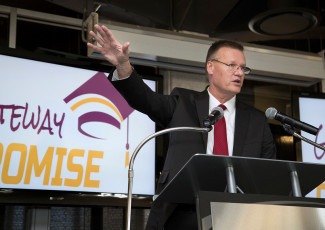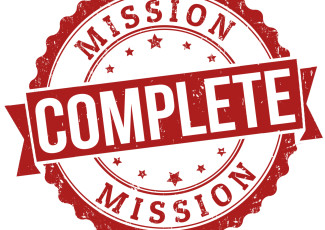Part 1: How Colleges Can Help With Financial Planning
By Sonya Stinson
March 16, 2016
One community college in Maryland shares its success story of starting a financial center for students and the surrounding community.
Editor’s Note: More and more community colleges are realizing what financial-literacy programs can do for students and the community at large. In this two-part series, we look at colleges that have had success in creating programs worth modeling. The first part is below.
In 2009, when Prince George’s Community College (PGCC), in Largo, Maryland, launched its Community Financial Center, the nation was in the middle of a mortgage crisis.
“Prince George’s County was especially hit hard,” says Betty Habershon, director of the financial center. “Even though we were considered a very affluent county, we have significant areas of poverty within our community. Also, this issue hit across income levels.”
In addition to the economic downturn, college administrators also faced the ongoing challenge of having a large percentage of students who struggled to make ends meet. The goal of the new financial center was to help students — and the community — create more financial stability in their lives.
Establishing a program that works
With a $40,000 grant from Citi Foundation, PGCC developed Finance 411, a series of workshops and seminars on topics ranging from how to research financial aid to how to steer clear of mortgage scams. Later, the college partnered with the Maryland’s CASH (Creating Assets, Savings and Hope) campaign to offer one-on-one financial coaching and provide training for the coaches.
Even before the Community Financial Center opened, the college already offered a few for-credit courses in personal finance, as well as some workshops and noncredit courses. It has operated a tax-preparation assistance program for more than 15 years, serving more than 1,000 people annually, Habershon says. In fact, the campus is one of two primary free tax-preparation sites in Prince George’s County, along with another operated by AARP, and it’s been used as a model.
“The IRS on many occasions has asked us to share with other organizations what we do here at the college,” Habershon says.
A model to learn by
The Community Financial Center is staffed by student and community volunteers under faculty supervision. Tax preparers must earn IRS certification by completing a training program on campus in January, attending classes once a week for five weeks and passing a comprehensive exam, Habershon says.
Until this year, there was no centralized physical location for accessing the center’s services. That changed with the February opening of the Financial Empowerment Center on campus, funded by the local United Way chapter.
The center will soon add business coaching to its list of services, using teaching material from the Federal Deposit Insurance Corporation (FDIC). An internship program has been created to allow student coaches who put in a significant number of hours to receive credit and a stipend for their work.
Benefits for students
For the students who come to the Financial Empowerment Center for help with money management, the assistance received can make a big difference in their chances to complete their educational goals, Habershon says.
“Students succeed when they are able to stay on time with their plan and stay in school,” she says. “When you have students having to deal with significant financial issues in their personal lives, it of course can devastate their school program.”
Providing money-management advice — for example, pointing out situations that make it unwise to take out a college loan or teaching them how to develop good credit — can help remove those financial distractions and keep students on track, Habershon says.
Habershon advises other community college administrators developing their own financial literacy programs to look for opportunities to expand their offerings as needs and goals evolve. That’s what happened when the center at PGCC began providing individual financial coaching along with its workshops.
“Workshops are still important to us, but I think that for many, the coaching feature now is a step forward,” Habershon says. “We want, preferably, behavioral changes, and not just those one-time transactions.”
Stay tuned for the second part of this series.







